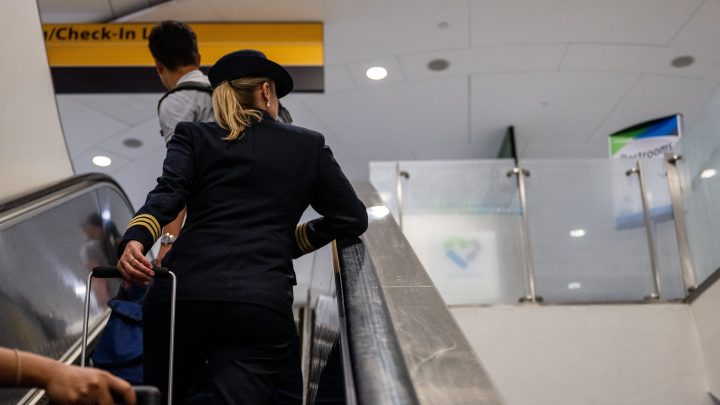
A pilot shortage means higher airfares and service cuts at regional airports
A pilot shortage means higher airfares and service cuts at regional airports

You probably already know that we are into some of the busiest travel days of the year. Sunday, more than 2.3 million people went through Transportation Security Administration checkpoints. That’s more than last year and even a little bit more than in 2019, in the before times.
Prices are also up — 43% higher than last year — because there just aren’t enough flights to meet all the demand. There aren’t enough flights because airlines are short-staffed. They need pilots, in particular.
The shortage is hitting regional carriers and smaller airports hardest. Three-quarters of all airports in the country have fewer flights now than they did before the pandemic.
“And the average loss at those airports is 31% of their flights,” said Drew Jacoby Lemos at the Regional Airline Association, which released the data.
All kinds of airports — from the major international ones to those in the smallest-town— have been losing flights. But “the small, non-hub, non-primary airports that are served overwhelmingly by regional airlines, they’re the ones facing the largest impact,” Jacoby Lemos said.
Sixty airports have lost more than half of their flights since 2019, and 14 no longer have any commercial service at all.
“That creates a big problem for communities to maintain connectivity to the larger world,” said Edward Russell at Airline Weekly.
This was happening before the pandemic too. “But the pandemic accelerated the pilot situation,” he added.
When COVID-19 hit and air travel basically ground to a halt, many airlines encouraged pilots to take buyouts or early retirement. Then, when demand came surging back faster than they expected, they couldn’t hire quickly enough.
The pilot shortage has improved some since the summer, said travel industry analyst Henry Harteveldt.
“The largest airlines, airlines such as Southwest or Delta, are the airlines that have had the most success in recruiting pilots. But in the airline business, it’s literally borrowing from Peter to pay Paul. And in this case, the Peters are the regional airlines.”
Those regional airlines generally don’t pay as well as the major domestic and international carriers. Smaller, regional flights also tend to cost more to operate per seat — another reason they’re often the first to go.
“Now, if you live in a small town that’s an hour or two away by car from another airport, the loss of air service is an inconvenience, but it’s not truly detrimental,” Harteveldt said.
But, he added, it’s another story for people and communities that are now three or four hours from the nearest airport with commercial service.
There’s a lot happening in the world. Through it all, Marketplace is here for you.
You rely on Marketplace to break down the world’s events and tell you how it affects you in a fact-based, approachable way. We rely on your financial support to keep making that possible.
Your donation today powers the independent journalism that you rely on. For just $5/month, you can help sustain Marketplace so we can keep reporting on the things that matter to you.

















